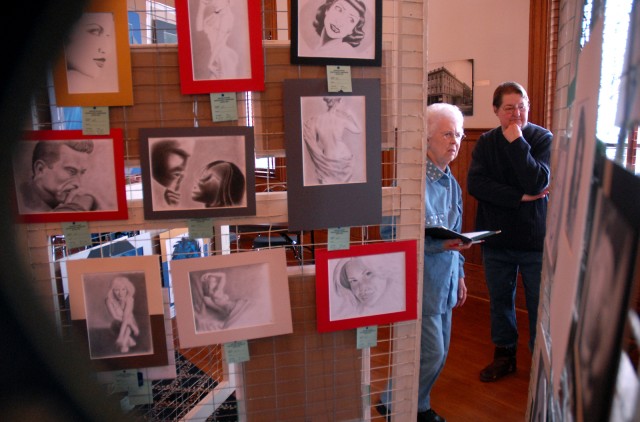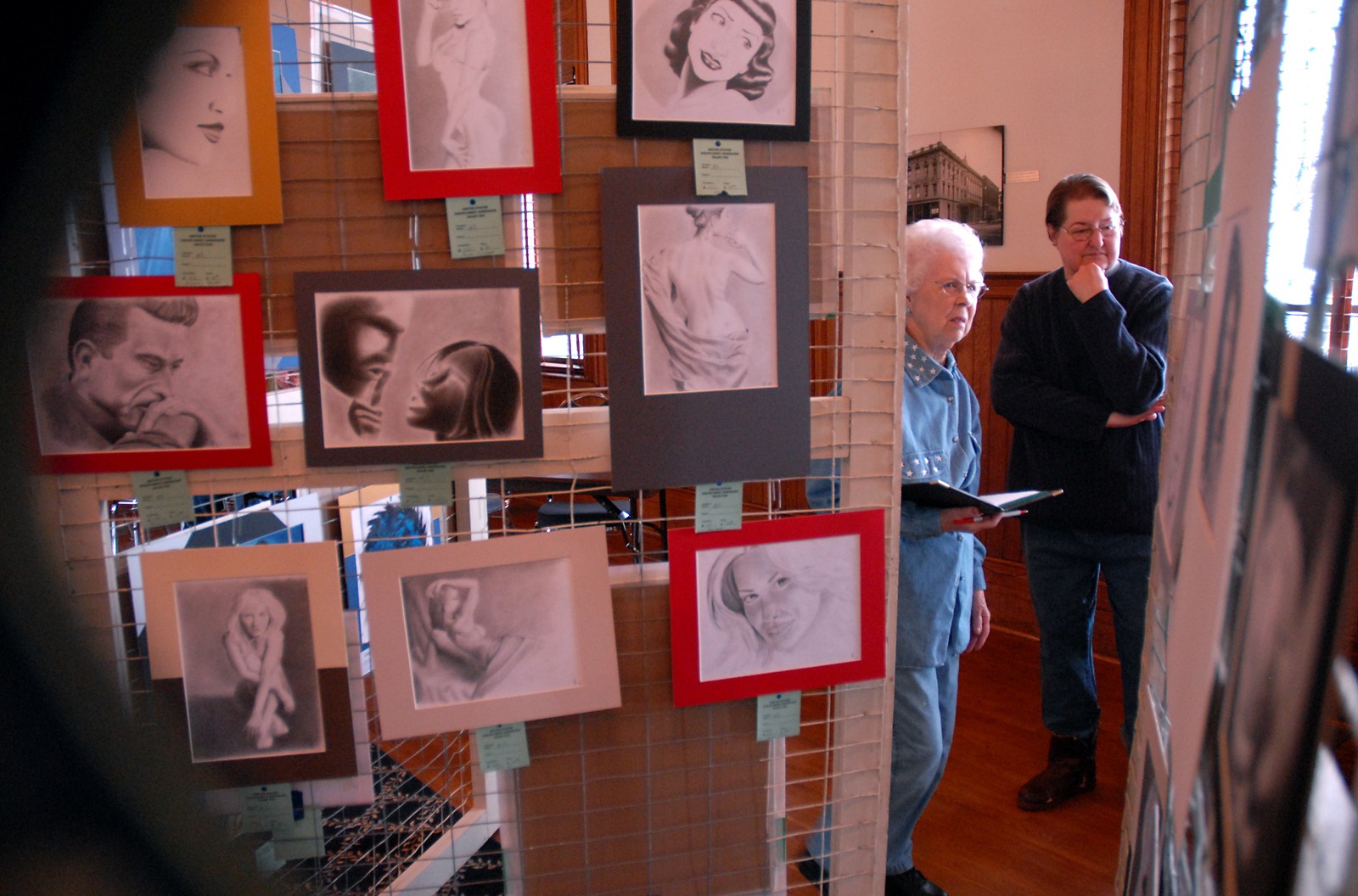
FORT LEAVENWORTH, Kan. (Feb. 11, 2010) - From a painting titled "Parole Violation," a pale, agonized face appears in a cloud of gray and black finger paint streaks, conveying a message about its creator's experiences.
For 28 years, members of the Leavenworth community and beyond have been collecting art created by inmates through the "Hidden Art Locked Away" art show and sale. The show, a fundraiser for the River City Community Players, has had varied participation from local prisons throughout the years, said Frank Gieb, coordinator for the show who serves on the local theater group's board of directors.
"Every year there are people lined up on the street waiting to get in," he said, "people who come down here with the purpose of looking at what's here, and they want to buy."
This year, inmates from the U.S. Penitentiary and U.S. Disciplinary Barracks participated. All work is two-dimensional paintings or drawings, Gieb said, because of the difficulty in presenting ceramics or other fragile three-dimensional art.
Pat Fuqua and Betty Clay, members of the Leavenworth County Artists' Association, judged the pieces before the show opened to the public. A painting called "Pirate" won first place, a non-titled painting of five men drinking coffee won second, and a black-and-white drawing of a woman won third. Gieb said he often gets to meet the inmates to present them with ribbons. Although the inmates don't get money from their prize, they get bragging rights around other inmates.
"The inmates are very proud of the good work they've done," he said.
"The guys that I've met in the U.S. Penitentiary and the U.S. Disciplinary Barracks, I didn't know their backgrounds unless they told me. You'd never know they were whatever they were, whether they were in for life or not. They were just likable guys."
Dave Kerr, USDB Arts and Crafts Program manager, said inmates have to reach a minimum custody level and be on a waiting list for a year to even gain access to one of the 30 craft stations at the facility.
"It's an incentive program to reward long-term non-problematic behavior," he said.
Kerr, who has a background in sociology and counseling, said he also teaches a basic art class for the general inmate population. Kerr said inmates can learn a marketable skill with their artwork, but also learn to use art as a tool to cope with stress.
"It's a great stress reliever, and I know there are a number of inmates here that come in almost every day of each month to just separate themselves from the rest of the population to eliminate any stresses or hassles," he said. "They find it more enjoyable to come in here and relax than to stay in their pods (the housing unit.)"
Saddle making and pottery are among the marketable skills inmates can learn.
"I know that several of them left here fully capable of getting a job as a studio potter, and do studio pottery work," Kerr said.
The arts and crafts shop in the USDB does carry basic items, such as 25-pound bags of clay, but inmates are responsible for buying some of their art supplies. Kerr said they set their own prices for the art show and the USDB Sales Store on post. At the store, the inmates get 90 percent of the price of the item, and at the art show, they receive 80 percent. The rest of the art show proceeds go toward the River City Community Players.
While judging the artwork, Fuqua and Clay said they were impressed with the quality and found it difficult to pick out the very best.
"We had fun doing this, but it's a brain racker because there is too much good stuff," Fuqua said.
Out of 211 paintings and drawings, they picked three ribbon winners and eight honorable mentions. It took them three hours.
"I think it's wonderful," Clay said. "I'm encouraged by what they are doing and what they are learning."
Gieb, Fuqua and Clay said they had several pieces of inmate art in their homes purchased from shows throughout the years, and they aren't the only ones. Gieb said someone once drove to Leavenworth from Independence, Kan., to buy paintings for a bank.
Kerr said aside from the annual sale, the USDB Sales Store is the only place the facility is authorized to use for selling inmate art. Although its selection isn't as large as the art show, a few pieces are on display at the store, 740 W. Warehouse Road.

Social Sharing